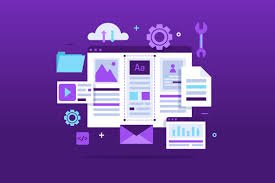Context: The Rising Demand for Intelligent Support Systems
As customer expectations rise and support requests multiply, businesses are increasingly turning to AI-powered help desk solutions to optimize service delivery. These platforms not only reduce operational load but also enhance customer satisfaction through smarter automation and seamless engagement.
Two distinct models have emerged as front-runners:
- One emphasizes conversational AI to elevate real-time interaction and self-service.
- The other focuses on a comprehensive, automation-rich ticketing system to streamline structured workflows.
Understanding their respective strengths can help businesses select a solution that aligns with their operational goals and customer service strategy.
Model 1: Conversational AI-Enhanced Help Desk
This model integrates an intelligent virtual assistant directly into the support environment, transforming how businesses engage with customers at scale.
Key Advantages:
- 24/7 Self-Service via Chatbots
Instantly answers common queries across web and mobile channels, reducing agent workload and resolution times. - Smart Agent Assistance
Suggests real-time responses and relevant knowledge base links, allowing human agents to focus on complex issues. - Anomaly Alerts
Detects spikes in ticket volumes and alerts managers proactively—ideal for businesses with fluctuating customer demands. - Automatic Categorization & Routing
Uses machine learning to classify tickets and route them to the appropriate teams, ensuring faster resolutions. - Actionable Dashboards
Delivers insights into customer sentiment, emerging issues, and team performance, driving continuous improvement.
Business Impact:
- Reduced cost per ticket
- Higher self-resolution rates
- Improved customer response time
Best Fit For:
- B2C companies, high-volume support centers, and fast-scaling startups seeking to automate and scale service interactions quickly.
Model 2: Comprehensive Ticketing System with Advanced Automation
This model provides an end-to-end support infrastructure built for complexity, customization, and cross-functional integration.
Key Advantages:
- Workflow Automation
Handles repetitive support tasks, escalations, and SLAs—reducing operational overhead and ensuring consistency. - Multilingual Support
Facilitates global service delivery with localized interfaces and content. - AI Copilot for Agents
Suggests responses, translates tickets, and summarizes customer interactions, improving resolution quality and speed. - Mobile Accessibility
Equips field and remote agents with full support capabilities on-the-go. - Customizable Customer Portals
Enables branded, self-service experiences aligned with the organization’s identity and customer journey.
Business Impact:
- Increased agent productivity
- Improved SLA compliance
- Enhanced support personalization
Best Fit For:
- Large enterprises, internal IT teams, and organizations managing complex or multi-channel support environments.
Strategic Considerations for Business Leaders
| Decision Factor | Conversational AI Help Desk | Ticketing System with Automation |
| Primary Goal | Reduce volume, enhance speed | Streamline processes, manage complexity |
| Customer Focus | Immediate, real-time engagement | Structured, multi-touch support |
| Operational Maturity | Early to mid-stage service teams | Mature support organizations |
| Scalability Needs | Rapid scale with lower overhead | Deep customization with integrated tools |
| Analytics & Insights | Focused on real-time sentiment | Focused on team and SLA performance |
Conclusion: Aligning Technology to Service Strategy
Both help desk models offer tangible benefits—but their impact varies based on your business objectives:
- Choose the Conversational AI-Enhanced Help Desk if your priority is efficiency, speed, and customer deflection through automation.
- Opt for the Comprehensive Ticketing System if your focus is support governance, complex workflows, and enterprise-grade customization.
Investing in the right AI-powered help desk can unlock operational efficiency, reduce costs, and significantly enhance customer loyalty—making it a strategic pillar in your service transformation journey.

